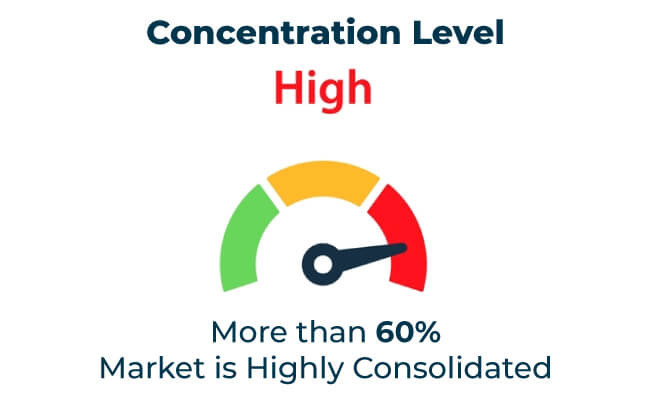The social media and destination market share analysis is transforming as a new era of digital platforms revolutionizes the way travelers interact with tourism. Meta (Facebook, Instagram), TikTok and Google (YouTube, Google Ads) account for 60% of the market, leveraging AI-driven personalization, data-driven marketing and influencer partnerships to influence travel choices. Their platforms integrate to allow travel brands to execute hyper-targeted campaigns, shed ad placements, and refined audience segmentation via machine learning algorithms.
The vast dominance of Meta with Facebook and Instagram leads to advanced capabilities for brands, such as AI-powered audience targeting and real-time analytics. The high engagement rates driven by Instagram’s short form Reels and Facebook’s integrated ad placements make these platforms a must for your destination digital marketing strategy.
By contrast, TikTok has transformed the way we discover travel, by means of its image-centric, algorithm-driven content discovery, which can turn viral trends into boons for tourism. Interactive challenges like TravelTok create seamless engagement with Gen Z and Millennial audiences for travel brands.
Google holds precedence with its search-based ads and video provisions. The structure of YouTube’s travel vlogging ecosystem in combination with the keyword targeting features in Google Ads guarantee travelers see destination-related content throughout their purchase funnel. Programmatic ad campaigns powered by AI improve target precision, boosting the efficiency and ROI of tourism marketers’ ad efforts.
This gives room for regional platforms and niche marketing firms that enjoy about 25% of this industry. In China, where WeChat reigns supreme, social engagement and travel services, such as booking via Mini Programs and influencer-driven recommendations, are all executed in one seamless interface.
In Russia, VKontakte serves a similar function; it will help curate localized travel promotions and community-driven content. Simultaneously, TripAdvisor continued to flourish as a go-to destination for traveler-generated reviews, while tourism businesses utilize reviews to increase trustworthiness and drive bookings.
The last 15% of the market is divided between independent digital marketing agencies and travel content creators. Companies such as Travel Mindset and Beautiful Destinations are boutique firms focused on experiential storytelling and destination branding.
Head of Travel, they develop high-energy, high-impact influencer campaigns, create visually stunning content and use a social-first marketing approach to reach niche travel audiences. Independent operators like digital nomads and travel bloggers combine to create relatable travel content aligned with international audiences, facilitating day-forward destination discovery over social media outlets such as Instagram, TikTok and blogs.
Explore FMI!
Book a free demo
| Key Players | Market Share (%) |
|---|---|
| Meta (Facebook, Instagram), TikTok, Google (YouTube, Google Ads) | 60% |
| Regional Platforms (WeChat, VKontakte, TripAdvisor) | 25% |
| Independent Agencies & Travel Content Creators | 15% |

By using AI-based analytics to optimize travel ads and partnerships with influencers, TikTok and Meta own the social media marketing space. Interactive reels on Instagram and targeted ad placements on Facebook lead to high engagements for destination campaigns. In the meantime, YouTube and Google are using SEO-led content and programmatic ads to influence travel choices.
There are other localized platforms such as WeChat and VKontakte that target specific demographical groups. WeChat melds travel-booking services with social recommendations, while VKontakte customizes Russian-language travel content to help boost local tourism. Independent agencies like Travel Mindset and Beautiful Destinations excel at immersive storytelling and experiential campaigns. We work with brands to create travel content that goes viral as well as influencer activations.
Luxury brands associate themselves with high-end influencers and unique spaces. Four Seasons and Aman Resorts partner with premier Instagram influencers to showcase curated experiences, tapping potential private travel communities via WhatsApp and Telegram.
For example, #TravelTok is a TikTok-led campaign that features real-time travel experiences, appealing to millennial and Gen Z travelers. Short-form video trends help brands like Expedia and Airbnb showcase unique accommodations and itinerary ideas for destinations. Think nomads and digital nomads who use their work networking platforms like Nomad List and Brisbane LinkedIn groups to find who is where. Bali’s co-living and Portugal’s digital nomad villages have seen traction via deliberate content pushes on Reddit and Twitter.
Social media and destination marketing strategies continue expanding in key regions due to increasing digital adoption and rising travel demand:
Meta (Facebook, Instagram), TikTok, and Google (YouTube, Google Ads) control about 60% of the market through AI-driven advertising and influencer campaigns.
Localized platforms like WeChat, VKontakte, and TripAdvisor represent 25% of the market by offering tailored content and booking services.
Independent firms and creators contribute 15% of the market, specializing in experiential travel storytelling and niche influencer marketing.
Winning Strategies in the Global Tourism Industry Loyalty Program Sector: A Competitive Review
Winning Strategies in the Global Animal Theme Parks Industry: A Competitive Review
Winning Strategies in the Global Spa Resorts Industry: A Competitive Review
Winning Strategies in the Global Winter Adventures Tourism Industry: A Competitive Review
Surrogacy Tourism Industry – Competitive Analysis and Market Share Outlook
China Destination Wedding Market Insights – Growth & Forecast 2025-2035

Thank you!
You will receive an email from our Business Development Manager. Please be sure to check your SPAM/JUNK folder too.